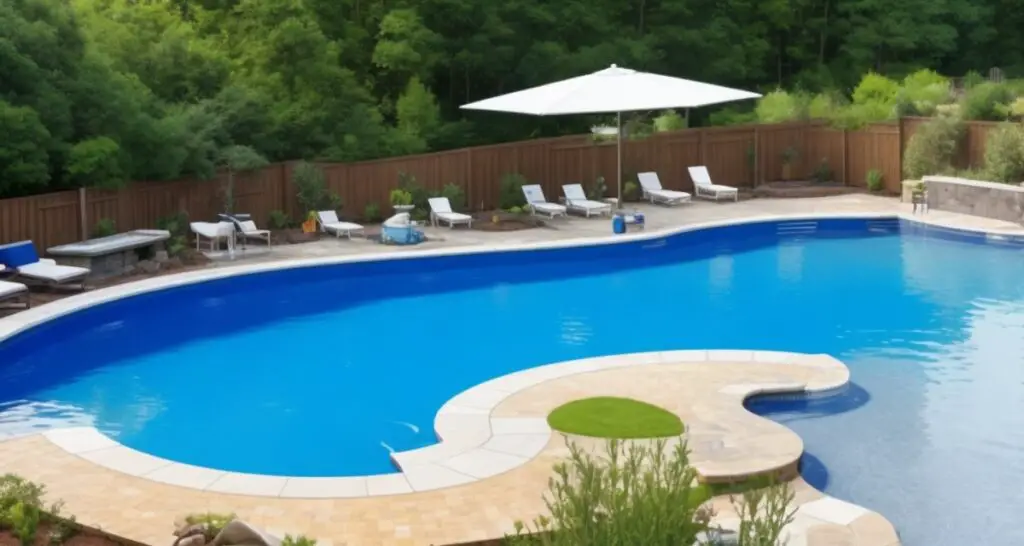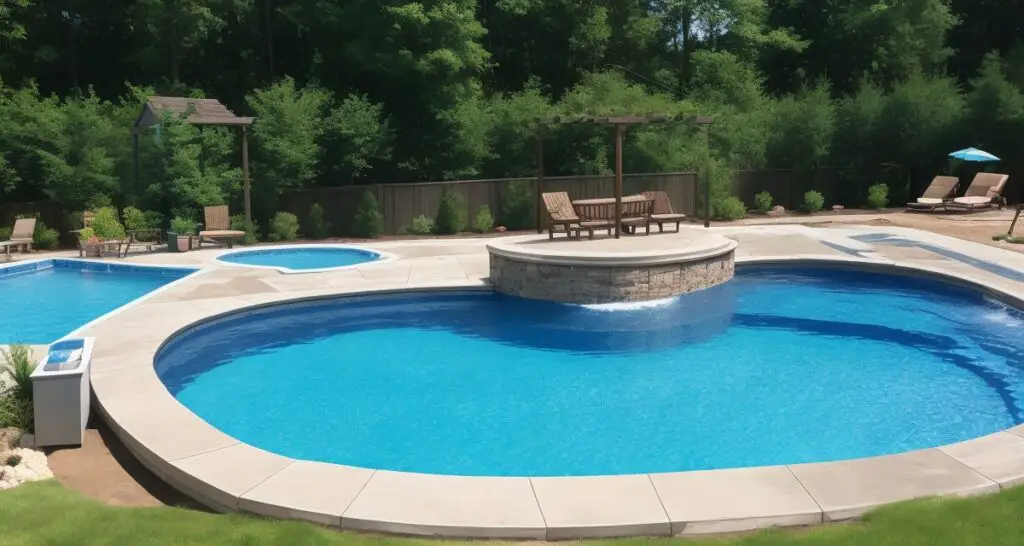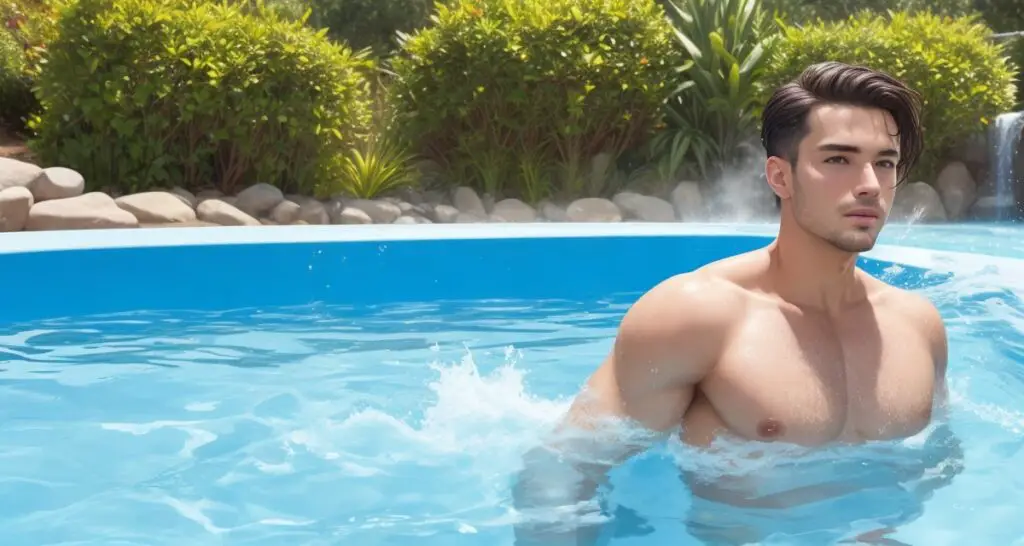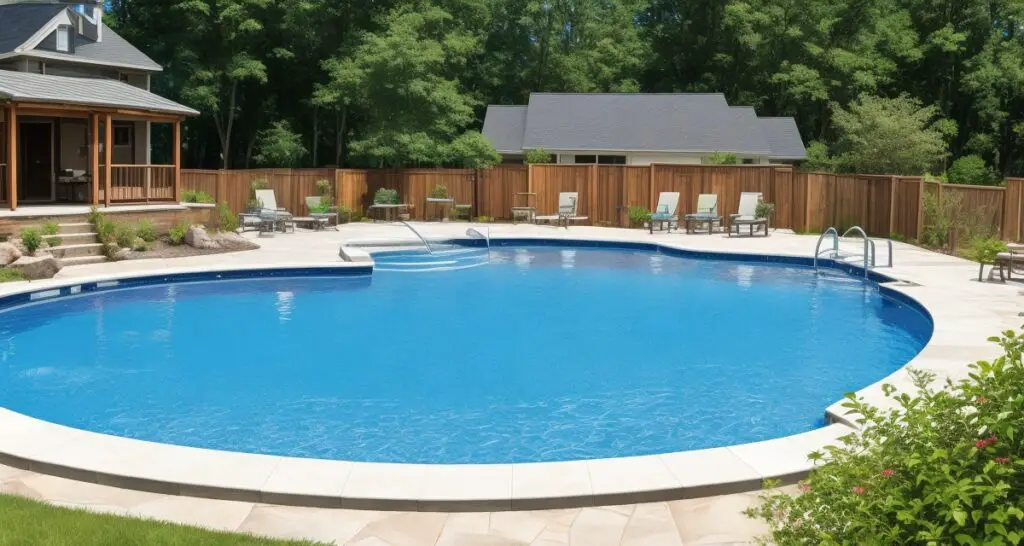With the arrival of summer, you might be contemplating the idea of creating your very own serene oasis – a private swimming pool where you can relax and enjoy aquatic activities.
It’s essential to understand that constructing a swimming pool is a task best left to the professionals. Installing a swimming pool can be a rather intricate process, and the specific rules and regulations governing pool construction can vary from one locality to another.
It’s important to know the true facts about “How much does it cost to put a swimming pool? because this information could help us with our financial preparation before taking the plunge into pool ownership. If you opt for an in-ground or built-in swimming pool, the type that necessitates excavating a sizable hole in your yard, you should anticipate an investment ranging from $35,000 to $100,000, which includes installation costs and Features such as decking. The final expense will depend on factors like the pool’s size, the materials used, and its design. For more elaborate and larger pool designs with intricate finishes and extensive landscaping, the cost may reach six figures.
In-ground pool vs above-ground pool

But before we proceed, let’s take a moment to explore the distinctions between in-ground and above-ground pools, considering their costs and the enhancement they bring to your property.
In general, an above-ground pool, essentially a substantial water-filled tank, proves to be a quicker and more budget-friendly option, making it an appealing choice for homeowners who are mindful of their expenses. According to estimates from HomeAdvisor, the cost of installation, along with Features like decking, typically falls within the range of $5,000 to $25,000. The ongoing maintenance costs for an above-ground pool are generally lower when compared to those of an in-ground pool, with annual expenses ranging from $1,000 to $1,200, as opposed to $1,000 to $4,000 for in-ground pools.
However, while opting for the more affordable route may seem appealing, it’s important to bear in mind that quality does matter. In-ground pools typically contribute more value to your home than their above-ground counterparts since they are integral and permanent To your property. In contrast, above-ground pools are considered temporary and are not factored into property appraisals. In fact, unless you reside in a region with a fervent pool culture, above-ground pools often do not augment the property’s value, according to many real estate professionals.
What are the main types of in-ground swimming pools?

When it comes to in-ground pools, one of the initial decisions you’ll need to consider is the material from which you’d like your pool to be constructed.
The three most prevalent options are concrete/gunite, vinyl-lined, and prefabricated fiberglass pools.
As per information from HomeAdvisor, vinyl-lined pools are typically the most economical choice at the outset. However, they may incur higher maintenance expenses over time due to the need to replace the liner approximately every 10 years. On the other hand, fiberglass pools have a higher installation cost but prove to be more cost-effective in terms of ongoing maintenance. As for traditional concrete and gunite pools, they offer the most customization options but come with significant installation and maintenance costs.
Here’s a breakdown of the costs and maintenance details for each pool type:
Concrete/Gunite: Installation costs range from $55,000 to $100,000, with annual maintenance expenses of $2,700 to $4,000. When properly cared for, these pools can last up to 100 years.
Fiberglass: Installation costs vary from $45,000 to $85,000, and annual maintenance typically amounts to $1,000 to $1,500. Fiberglass pools are known for their durability and ease of cleaning.
Vinyl-Lined: The installation cost falls in the range of $35,000 to $65,000, with annual maintenance expenses of $1,100 to $1,700. The vinyl liner needs a full
What influences the cost of installing a swimming pool?

Every pool construction project is unique, and the costs of construction and installation are influenced by various factors, including your location, the topography of your property, and the specific characteristics of your pool.
In regions with consistently warm weather, where private pools are a common feature and supplies and contractors are readily available, pool construction costs are generally more budget-friendly. The reduced likelihood of weather-related delays contributes to a smoother process.
The size of the pool, regardless of its material, typically impacts installation expenses, and local regulations, such as permitting costs and waste disposal requirements, can also play a role in determining the overall cost.
The selection of Features for your pool will also affect the overall expense. Beyond conventional rectangle or kidney designs, non-traditional pool shapes tend to incur higher installation costs. Features like waterfalls and hot tubs can add an extra $2,000 to $17,600 to the project, according to HomeGuide.
Various supplementary factors can influence the project’s total cost to the pool itself. Suppose you plan to enhance your property alongside the pool installation, for instance, by adding a new deck, premium patio pavers, landscaping, or even a pool house. In that case, it’s advisable to allocate funds accordingly.
It’s important to note that in most municipalities, installing a pool necessitates installing a safety fence. The cost of this fence varies depending on factors like the size of your property, the materials chosen for the fence, and specific local requirements. For example, the cost may be higher if your city or town mandates self-closing gates. In general, you can anticipate spending between $600 and $4,400 for fence installation, as estimated by HomeGuide.
What’s popular in pools?
Swimming pools, like many other home improvement and design projects, follow trends when it comes to finishes and features. Here are some of the latest innovations in new pools:
Saltwater Filtration:
With the cost of chlorine on the rise, an increasing number of pool owners are opting for saltwater systems as an alternative to traditional chemical-based treatments. While the initial installation cost may be slightly higher (up to an $2,200 for the saltwater generator, as per HomeGuide), saltwater pools are easier to maintain on a day-to-day basis, requiring less attention than their chlorine counterparts.
Tanning Shelves and Benches:
In their quest to maximize the utility of their pool investments, owners are embracing tanning shelves (spacious, shallow areas where recliners can be partially submerged) and perimeter benches. These features provide Relaxation and socializing opportunities.
Diverse Shapes:
While rectangular pools remain popular due to their ease of installation and affordability, homeowners with more extensive budgets and space are exploring more intricate pool designs. These range from freeform geometric layouts to timeless Roman-style pool ends, allowing for greater personalization.
Smart Pool Systems:
The Internet of Things era has extended its reach to backyard swimming. Why rely on traditional timers and switches when you can use an app to monitor chemical levels, control your pool’s heater, or activate underwater lighting, all from your mobile device?
Jay Vogt, owner of Sherwin Pools in Massapequa Park, New York, notes that automation is becoming increasingly prevalent in the industry. “You can manage everything from your phone. Many of these features are becoming more common and are set to become indispensable.”
Does a pool add value to your home?

In the past, conventional wisdom suggested that a swimming pool could be more of a drawback than an asset when selling your home. Many prospective homebuyers did not place a high priority on having a pool, and some were deterred by the Responsibilities and costs associated with pool ownership, which, in turn, limited the pool of potential buyers (pun intended).
However, this perception has been undergoing a transformation, particularly in the wake of the COVID-19 pandemic, which prompted people to spend more time in the comfort of their homes. According to Homelight’s Top Agent’s Insights Report for 2021, real estate professionals estimated that before the pandemic, a house with a pool typically commanded an average premium of approximately $16,137 compared to a home without one. As of the spring of 2021, the estimated premium for a house with a pool had risen to $27,199 on average.
Kevin Kieffer, a broker associate with Compass Walnut Creek in the San Francisco Bay area, explains, “In recent years, due to the increasing emphasis on outdoor spaces, pools have become exceptionally desirable to buyers, who are willing to pay a premium for homes that offer this amenity. Kieffer highlights that purchasing a property without a pool and subsequently adding one tends to be considerably more expensive than acquiring a property with an existing pool.
Typically, an increase in value of around seven percent is associated with the presence of a pool. This percentage often falls short of the cost to install a pool, as pools typically recover only 56 percent of their installation expenses, as indicated in the National Association of Realtors’ “2023 Remodeling Impact Report: Outdoor Features.”
Nonetheless, it is vital to take into account your local neighborhood dynamics when evaluating the resale value of a pool. If all your neighbors have pools while you do not, your property may not command as high a price when you decide to sell.
Understanding your market is equally important. Kieffer notes, “Some buyers are adamant about having a pool, while others are equally definite about not wanting one.”
Bottom line on installing a pool

A built-in pool constitutes a substantial investment for homeowners. The installation expenses can be quite significant, and ongoing maintenance costs must be considered. However, the enduring popularity of pools suggests that the investment can be highly rewarding in terms of the enjoyment they bring.
If you’re contemplating the pool on your property, it’s advisable to seek out multiple cost estimates and understand your budget before the excavation process begins. This thoughtful approach can help ensure a well-planned and financially sound investment in your home.
FAQS About How Much Does It Cost To Put A Swimming Pool?
How much does it typically cost to put in a swimming pool?
The cost of installing a swimming pool can vary widely depending on factors such as the type of pool, size, location, materials, and Features. On average, you can expect to spend between $35,000 and $100,000 for an in-ground pool, including installation and basic features.
What factors influence the cost of a swimming pool installation?
Several factors affect the cost, including the type of pool (in-ground or above-ground), the materials used, the size and shape of the pool, local labor and permit costs, and any extra features like decking, landscaping, or lighting.
Are there ongoing maintenance costs for a swimming pool?
Yes, swimming pools come with maintenance expenses, including water treatment chemicals, energy costs for filtration and heating, and regular cleaning. Annual maintenance costs can range from $1,000 to $4,000, depending on the pool’s size and features.
Is there a significant difference in cost between in-ground and above-ground pools?
Generally, in-ground pools are more expensive than above-ground pools. In-ground pools can cost between $35,000 and $100,000 or more, while above-ground pools are more budget-friendly, typically ranging from $5,000 to $25,000 for installation.
What are some additional expenses to consider when installing a swimming pool?
Beyond the initial installation, you should budget for fencing, landscaping, decking, and customized features like waterfalls or hot tubs. These can significantly increase the overall cost.
How can I determine the specific cost of a swimming pool in my area?
To get an accurate estimate, obtaining quotes from local pool contractors or companies is essential. They can provide you with a detailed breakdown of costs based on your location and your specific pool requirements.
Are there any cost-saving tips for installing a swimming pool?
You can save on pool installation by choosing a smaller pool, opting for a simple design, and considering a saltwater system, which may reduce long-term maintenance costs. It’s also a good idea to obtain multiple quotes and negotiate with contractors to get the best deal for your budget.
Conclusion
The cost of installing a swimming pool can vary significantly depending on several factors, including the type of pool, its size, materials, and Features. While the average cost for an in-ground pool installation, including basic features, falls between $35,000 and $100,000, it’s essential to consider ongoing maintenance costs ranging from $1,000 to $4,000 annually. The choice between in-ground and above-ground pools and customization options can significantly influence the overall expense.
To determine the specific cost of a swimming pool in your area, it’s advisable to obtain detailed quotes from local pool contractors who can provide accurate estimates based on your location and unique requirements. By carefully considering all the cost factors and exploring cost-saving options, you can make an informed decision about installing a swimming pool that fits your budget and lifestyle.

